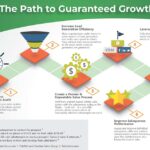While growing up in rural Southern Minnesota sitting at the dinner table of my grandparents’ farm, there came an additional treat every evening, more than just the traditional meal we had a conversational story that my Grandfather shared with us every evening. In retrospect, some of it fictional, some non-fictional all of it giving us a life lesson of some sort or it simply shared another perspective for us to analyze and other times an anecdote to remind us to smile and laugh.Ultimately, I still to this day remember and cherish the “Storytelling” he providing us every evening.
I attribute my public speaking, my salesman regime, and sales management style to those stories being a keystone and foundation of my upbringing. Storytelling, as you know has always been a favorite and memorable way to carry an appropriate message. The success of it has always been apparent, and today it is utilized continuously in business applications, education, and the spreading of knowledge with the power of POD Casts, sales blogs, and ever-heightening popularity “TED Talks.”
Storytelling is a fascinating tool for a sales force to utilize; it is best to employ after intently listening to the prospective client’s problem or needs. Then passionately and eloquently, conveying your opportune story that the potential client readily identify. When the story is complete, it is then time for the sales force to tie back the need and display to the client how this story answers their needs and how it will solve an issue the client has or benefit the client. Knowing what different stages of a sales interaction to apply the story or parable is “KEY” to the story to use and how it is structured, as well.
Please, add your comments to the storytelling you use “When you use them?” “How you use them and Why? “





Patrick,
I totally agree with you regarding how effective storytelling can be when used at the right time with a client. Unfortunately, it is a bit of a lost art. But for those of us who weave stories into our conversations on a daily basis it can produce amazing results!
Please feel free to connect with me, I’d enjoy comparing some notes with you when you have time.
Thanks!
Brian Cowell
I also have used storytelling since my early days in sales. People always enjoy hearing about how someone else benefited and why regarding your product or services. It helps the customer connect with and place themselves in a similar situation in thier mind eye allowing them to vizualize how they too will benefit and enjoy that same product or service.
Business Storytelling is absolutely crucial to retention and collaboration. Totally agree with your findings. Having written 3 books on purpose in life, 4,000+ articles on motivating and encouraging self and others and 2 motivational programs; knitting such sentences and paragraphs together for others is a well rewarded Joy. I look forward to your feedback.
Best of regards,
Whitney Jasnoch
Couldn’t agree anymore. Most people are judging for the first 10 minutes or so. I’ve always opened up with a new prospect by simply saying “ before I dig in and start asking you a slew of questions, let me share a little of experience about my history and how are companies do things and why we have such a high retention rate of customers. 4 steps to the Sales Process
1. Sell yourself
2. Sell your company
3. Sell explain your products
4. Sell your price and ask if there’s anything I didn’t cover or looking at what I could do on terms?
By far the most important attribute you have to have and that’s the God given talent to make a friend and cultivate it until the time is right where you can say “ Brett, I’ve never have told you much about what I do but after learning about your business we need to sit down and let me explain how I help people save and make money.
Being able to weave a story into a sales presentation is a good trait one can have in their bag of tools. Make sure your story relates to the clients interests and keep in mind while your telling the story, the client is wondering how does this relate to the conversation, what will I gain from listening to this story and most important, they ask themselves, how long will this story take to listen to and hopefully it won’t drag on.
I use my ears more than anything else when it comes to my sales approach, listening and asking questions are very important to me, I find that it builds a great relationship base, once I understand the customers needs, that’s when I tell a comparible story to show my client “Hey I get It” now we can move forward together to help your wants and needs. Not the tell them what they want to hear adage. It’s about building trust between the two parties and using my expertise to satisfied the customer and follow up after the service has been done…nothing like a happy client, which usually cultivates to more customers.
I have utilisee story telling once it was obvious in which direction the conversation was heading. It is very helpful in making a personal connection with the client.
Bringing a “been there done that” comment as evidence of both knowledge of the issue as well as potential credibility of the solution is one of the techniques for success.
I use storytelling when I’m trying to make a comparative point. ( ie. remember when or if I could, would you). But this only happens when you have attained credibility with the prospect first.
Make a point, tell a story.